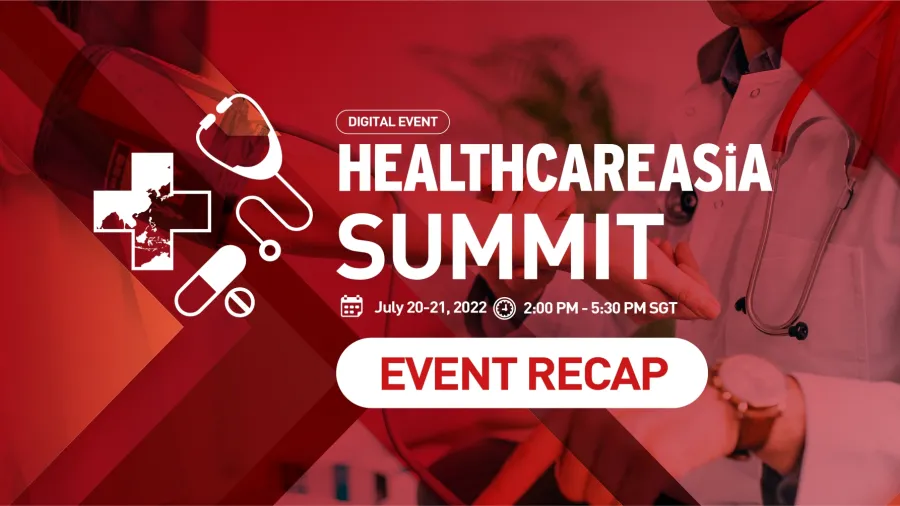
Post-pandemic opportunities present for healthcare amidst demand, changing needs
The second day of the Healthcare Asia Summit 2022 discussed trends in the industry and how healthcare organisations can take advantage of them in improving their services.
As healthcare enters a new period and moves beyond the impacts of the pandemic, new trends and drivers are influencing the industry. Amidst a growing digital world, healthcare organisations are shifting their priorities and processes to adapt to the new ways of working.
Continuous innovations in the evolving healthcare landscape mean there is a need to recognise that the delivery of patient care also changes over time. Technologies that aim to serve this purpose are now being put into the spotlight, and issues plaguing the industry are being addressed better than ever.
To highlight what the future holds for the healthcare industry, Healthcare Asia launched the Healthcare Asia Summit – a two-day event that will explore the latest healthcare technologies, services, and developments that will shape the future of the sector in Asia Pacific.
The conference was attended by senior executives from hospitals and healthcare firms, subject-matter experts from the top consultancies, business leaders, and regulators.
On the second day of the Summit, a panel of distinguished speakers provided their insights on consumerism in healthcare, elevating government hospital services through public-private partnerships (PPP), and bolstering the healthcare travel industry post-pandemic, amongst others.
Consumerism in healthcare
Alex Boulton, a partner at strategy consulting firm Bain & Company, was amongst the speakers at the event. In his speech, he highlighted how consumerism in healthcare is starting to rise in a way never seen before—expectations of better and more convenient ways of delivering services.
“Gone are the days of just having a trusted primary care physician that you rely on for everything for your family, and perhaps not consulting Dr Google, which is now the preferred first step in our healthcare system,” Boulton said.
Moreover, technological innovations in the industry also mean a shift towards precision and evidence-based medicine and care, as well as meaningful digital disruptions.
“As players rush to transform digitally, we are seeing massive pools of unstructured data sets that hold opportunity for forward-looking care and solutions that are now just being tapped and organised as well,” Boulton said.
Such innovations also amp up expectations for a more integrated and coordinated care journey. Boulton noted that patients’ most resounding desire is to move from the fragmented basis of care to have a single touch point of care to manage all their needs. This comes as more patients now have a greater desire to spend more out of their pockets to manage their health care better.
Due to this trend, Boulton noted that the adoption of telemedicine has been ‘meteoric’ across markets. He said that its penetration had doubled across the market and throughout the time period.
He added that such innovation now begs the question: how will telemedicine change the way offline care is delivered in the future? In response to this, Boulton pointed out that the net promoter score for the advocacy of telemedicine services is substantially higher in some markets over others.
For markets such as Indonesia and the Philippines, it is much higher as “there just isn’t that primary care touch point today.” In these markets, patients would have to go straight to a hospital and sit in lines for a long time before getting treated.
Meanwhile, it is much lower in markets such as Singapore, wherein there are already physical providers that patients can go visit.
“So, it does speak to the fact that in many of these markets like Singapore, you do need to ensure that you are seamlessly integrating the online and the offline to create a better experience for patients,” he said.
Exploring PPPs for healthcare infrastructures
As partnerships with the government are being rolled out for other industries such as retail, banking and finance, and power, it is a big question if the same thing can be done in healthcare.
This has been the main driver in the establishment of the Makati Life Medical Center, a Level 2 hospital with multiple speciality centres born from the PPP between Life Nurture Incorporated and the City Government of Makati.
For Makati Life Medical Center President and CEO Dr Dennis Sta. Ana, who is also one of the panel speakers in the conference, the objective behind this was to learn the private sector funding and efficiency to come up with a business model that will also ensure affordability, security, and sustainability for a project.
This comes amidst what he deems as a “woefully inadequate” healthcare system in the Philippines.
Sta. Ana adds that the partnership is “truly a transformative healthcare collaboration” as this has never been done in healthcare in the country.
“I would say this is a proof of concept that, if successful, we hope that other private organisations will emulate and perhaps invest in further increasing the healthcare capacity and services in our country, the Philippines,” he said.
Ensuring sustainability in travel healthcare
Due to the border closures brought by the pandemic, the travel healthcare sector has hit a double whammy—with healthcare services being limited and travel restrictions being in place.
Now that lockdowns are being eased and healthcare is starting to become more essential than ever, healthcare organisations can now rebuild their services with sustainability in mind. This comes amidst emerging threats to public health.
Malaysia Healthcare Travel Council (MHTC) CEO Mohd Daud Mohd Arif emphasised that there are key factors that organisations need to look into in building a more resilient future for travel healthcare.
Firstly, building confidence and trust for the patients to come back and start to travel again is a priority given the need for safety from risks of infection.
“We need to make sure that this environment is available, and we need to make sure that there are specific protocols being put in place to ensure that patients are confident in travelling again, especially post-pandemic,” Mohd Daud said.
He also pointed out that there is a lot of demand for treatments in all parts of the world, brought on by the hesitance to travel or restrictions on border controls. He added that consumers’ behaviour post-pandemic is also something that needs to be understood as their demands change.
Mohd Daud noted as well how digitalisation and automation have been accelerated in all sectors throughout the pandemic period, and how healthcare organisations need to take advantage of these trends to refine their services.
Similarly, he pointed out that these key factors present global opportunities for healthcare travel. Amongst them is the capability to “work and network” with all platforms across the globe, wherein a global ecosystem can be made to provide them with quality choices and a seamless journey when they seek treatment.
“We are willing to work with many places around the world. We are looking at a very, I would say effective public and private partnership, not just within Malaysia, but also with partners abroad,” he said.
Cultivating a culture of safety in healthcare
Potential mistakes are inevitable in any industry, much more so in a safety-sensitive industry such as healthcare. Developing a culture of safety is having an active awareness that these mistakes can happen at any time.
For Apollo Hospitals Group Chief Quality Officer and Head of Operations Gaurav Loria, it is important to acknowledge these, learn from them, and take action to put things right.
“The proactive organisations are really focused on identifying what could be done, where we could fail as a system. So, you know, [with] safety, leadership, and value drive continuous improvement,” Loria said. He added that proactive organisations set very high standards for themselves, and they use failures to improve and know what they need to work on instead of blaming any individual.
Loria also mentioned that organisations can monitor whether the care that healthcare organisations provide is safe or not. By having safety rounds and leadership patterns, complying with clinical systems and processes, as well as ensuring that there is a patient safety officer in the organisation, patients can feel safe.
“We have focused action plans, [we] communicate these action plans and deliverables with timelines, implement these action plans, and then monitor continuously to know, are we up there? What more do we need to do? And, you know, what's the next step?” he said.
How acoustics affect quality of healthcare
With healthcare facilities being some of the most critical environments to be in, acoustics can be vital in how organisations deliver their services and in how patients heal. According to Arup Associate Principal for Acoustics, Nick Boulter, all buildings have important acoustic issues that are fundamental to the successful use of the building.
Amongst the examples that he provided are having a sound environment for people who need to sleep, spaces that have very low noise limits, and controlling the noise and vibration that comes from hospital equipment, which may affect imaging.
However, he acknowledged particular noise issues with hospitals that are “particularly difficult” to deal with. The three most common, according to him, are noise from helicopters, ambulances, and plants and equipment.
Whilst the noise from ambulances and helicopters does not have much scope for reduction, Boulter noted that there is something that can be done to reduce its intrusion into the buildings. He mentioned that through the careful design of hospital facades and roofs, facilities can ensure that it almost gets to a level where it is barely noticeable.
Meanwhile, he said that noises from plants and equipment are manageable, as these areas can be “carefully designed, particularly if the location of that equipment is thought about from the acoustic perspective as well as from the engineering perspective.”
“Ultimately, there's almost always a degree of noise control that has to be implemented to limit noise affecting both the hospital and neighboring properties,” Boulter added.
He also pointed out that a huge body of evidence links acoustic conditions in healthcare facilities to medical outcomes. It also shows how effective medications are under different noise conditions, how noise affects the hospital staff’s mood, as well as how mental illnesses are critically impacted by noise.
“[Facilities] need to be very carefully designed structurally to make sure that the expected vibration levels are controlled by the use of appropriate weight in structures, appropriate stiffness in floors,” he said.
Enhancing home care with digital technology
The difficulties in accessing healthcare during the height of the pandemic have brought opportunities for services to be delivered remotely into patients’ homes. This has paved the way for facilities to change the way patient care is being done.
Hoan My Medical Corporation Group Chief Medical Officer Le Thi An Lu also noted that despite services being done remotely, they can still treat patients with high effectiveness. This is due to the constant follow-ups being made and reviewing the data available to them.
“We all know that prevention is always better than treatment. If the disease can be treated at home, it is a long way better than the disease that requires hospitalisation. When we enhance home care and prevention with digital technology, we can increase the ability of home care and healthcare services,” she said.
The officer added that digital applications can support healthcare in different ways to reap more benefits. She said that it can help with better communication between healthcare workers and patients, and they can still stay in touch if they are running late.
Digital technologies can also improve care by streamlining the workflow, allowing healthcare workers to seek patients and better balance the dual aspects of risk management and time management. Le said this will improve the quality of care to assemble the remote monitoring to allow care to arrive to the patient safely.
Meanwhile, she mentioned that digital technologies can be used for intervention, monitoring, and remote assessment, amongst others.
“It seems that our components in our industry 4.0 have been used to lay out the work of the solution for home care, including the Internet of Things. So big data analysis, 3D printing, cloud computing, and location detection,” Le said.
How to deal with big data in private health care
With the adoption of the latest technologies in healthcare, processing massive volumes of information becomes inevitable.
KPJ Healthcare Bhd Chief Corporate Officer Ariesza Noor noted that big data in healthcare helps collect patient records and manage hospital performance that are otherwise deemed impossible and too complex to be managed by traditional technologies.
“Stakeholders today expect that with the adoption of big data, we are going to be able to expect a better and faster diagnosis, early disease detection, better prognosis, better treatment outcomes, reduced errors and adverse events, and, of course, new therapies as well as innovation,” she said.
Noor identified the platform that captures the data and the culture of sharing as some of the key enablers of big data adoption. These factors have been harnessed to provide business intelligence which could improve processes, save costs, reduce wastage, enhance patient care, and help better treatment outcomes.
They present opportunities in the field as well. One of the quite popular ones that Noor identified is its use for precision medicine. She mentioned that big data analytics in healthcare will allow the use of new technologies both in the treatment of patients and health management, and it can empower patient support, public health policies, and reduce overall healthcare costs.
“Big data can prompt the assessment of the effectiveness of health interventions, and personalise opposition medicine. Big data is key for precision medicine, which is aimed at giving the right treatment to the right patient at the right time, hence, giving the best chance of cure and avoiding adverse effects,” Noor said.
She added that the seamless integration of greatly diverse big healthcare data technologies can not only enable stakeholders to “gain deeper insights into the clinical and organisational processes, but also facilitate faster and safer throughput of patients, create greater efficiencies, and help improve patient experience or patient flow.”
Aside from these, utilising big data can also help reduce costs and readmission rates. Big data healthcare algorithms can assist healthcare facilities in better planning personnel staffing according to the expected admission rates, and in knowing how they perform when it comes to discharging patients at the appropriate time.
Despite the innovations that come with employing these technologies, Noor mentioned that there is still a downside when it comes to the lack of technical support and minimal security.
“Unfortunately, I think technology has moved really fast, but there is still a lot of scarcity when it comes to data scientists as well as analysts that will be able to look into the opportunities that we can harness from the data,” she said.
Noor added that no matter how useful big data is for the advancement of medical science or vital it is to the success of healthcare organisations, it can only be used if security and privacy issues are addressed.
Watch here the recording of presentations.
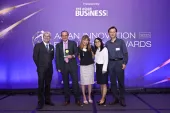

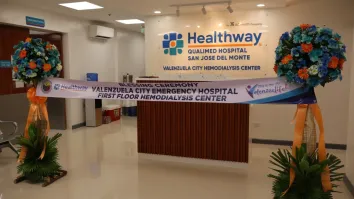
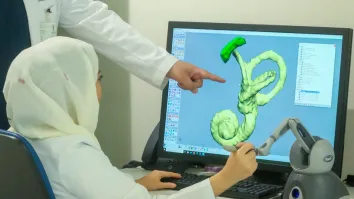
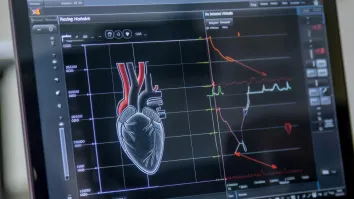
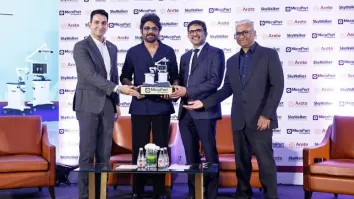













 Advertise
Advertise





